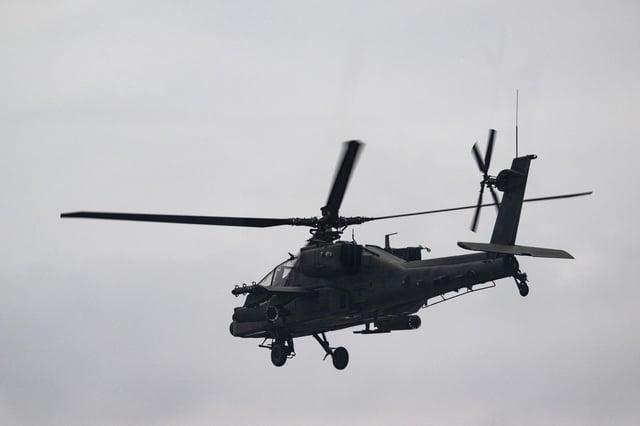By Kristina Vankova
In a strategic shift reflecting contemporary advancements in military technology, South Korea has decided to prioritize cutting-edge drone and artificial intelligence systems over traditional helicopter models, specifically the Apache helicopters. This decision highlights a broader trend within global defense strategies, where nations are increasingly opting to invest in technologies that promise more flexibility and advanced capabilities on the modern battlefield.
The Strategic Military Shift
The Republic of Korea鈥檚 decision to bypass further purchases of Apache helicopters marks a significant turn in its defense policy. These helicopters, though long regarded as the pinnacle of combat rotary-wing aircraft, are now being sidelined in favor of unmanned aerial systems and AI-driven solutions. This move underscores the desire to harness technology that offers not only cost efficiency but also the promise of reducing human risk in combat scenarios.
It is no secret that the development and application of drones and AI technologies have exponentially increased over the past decade. They offer unprecedented surveillance, precise targeting, and remote engagement capabilities that manned helicopters simply cannot match. South Korea鈥檚 decision is a testament to its commitment to leveraging these advantages in future military operations.
Drones and AI: The Future of Combat
As nations worldwide re-evaluate their defense strategies, drones and AI are at the forefront of this evolution. Unlike traditional aircraft, drones offer enhanced operational capabilities at a fraction of the cost. They can be deployed in various configurations to suit surveillance, reconnaissance, and even offensive operations without risking pilot safety.
AI technology further complements this by allowing for advanced data processing and analytics, enabling real-time decision-making and autonomous mission execution. The use of AI can potentially transform the dynamics of engagement, offering predictive insights that enhance situational awareness and tactical precision.
Advantages of Unmanned Aerial Systems
Cost Efficiency: Drones and AI systems are generally less expensive to produce and maintain compared to traditional helicopters, offering substantial savings over time.
Mission Flexibility: With capabilities ranging from low-altitude surveillance to high-altitude strikes, these systems can adapt to varying mission requirements.
Risk Reduction: Unmanned systems remove the need for on-board personnel, significantly lowering the risk to human life in conflict zones.
Global Trends and Implications
South Korea鈥檚 strategic pivot is not an isolated case. Many countries are actively investing in the research and development of similar technologies. This is fueled by the potential for drones and AI to revolutionize military engagements and enhance national security capabilities. From the United States to European nations and neighboring countries like China and Japan, there is a focused effort on integrating these technologies into national defense arsenals.
The implications of this shift are profound. As more countries develop and deploy advanced unmanned systems, the nature of global military power will undergo significant changes. Nations investing heavily in these technologies may find themselves at a strategic advantage, able to project power and provide security in complex geopolitical landscapes without engaging in conventional warfare.
Moreover, the integration of drones and AI raises important discussions about the ethics and regulations of autonomous weaponry, necessitating international dialogue and cooperation to address potential challenges and ensure that these technologies are employed responsibly.
In conclusion, South Korea鈥檚 decision to transition away from Apache helicopters towards drone and AI technology exemplifies a broader movement within global defense strategies. By embracing these advancements, South Korea not only enhances its military capabilities but also positions itself at the forefront of technological warfare, setting a precedent for others to follow in an age where digital innovation is key to national defense.
